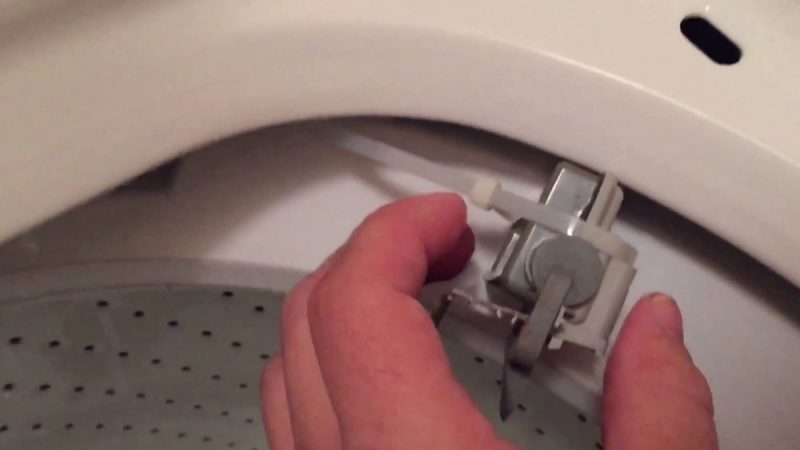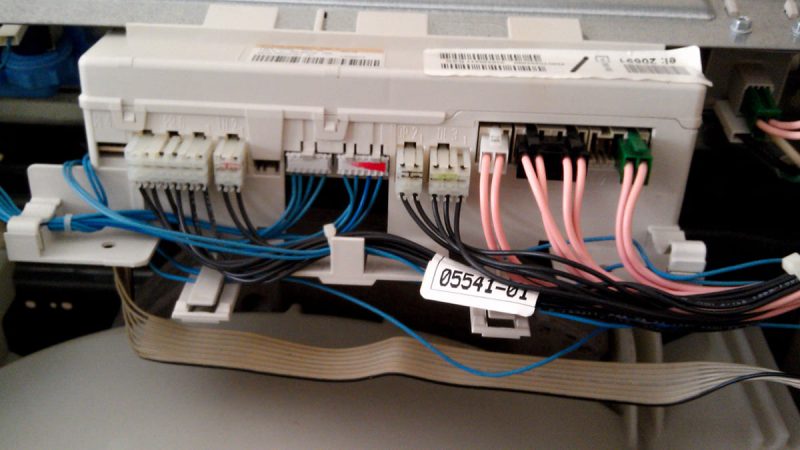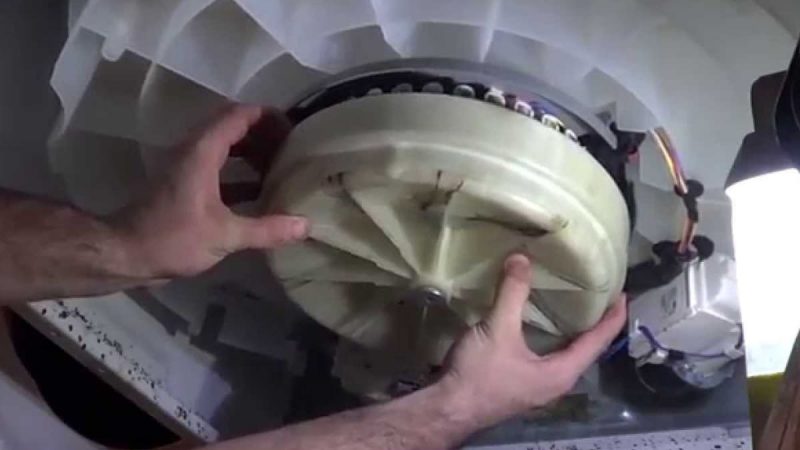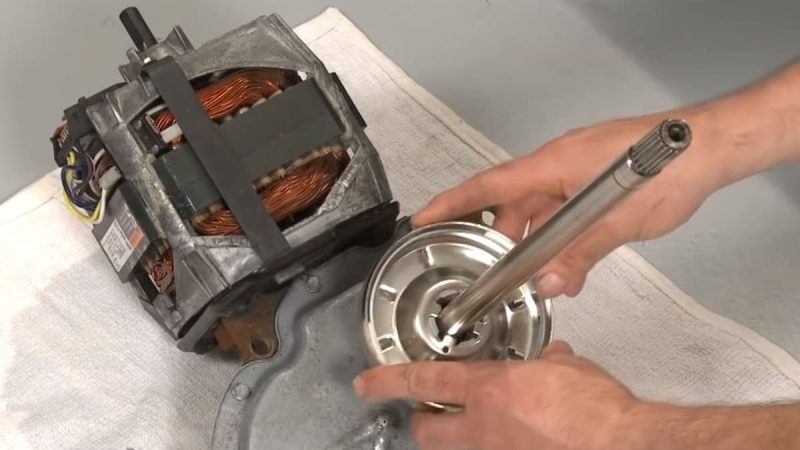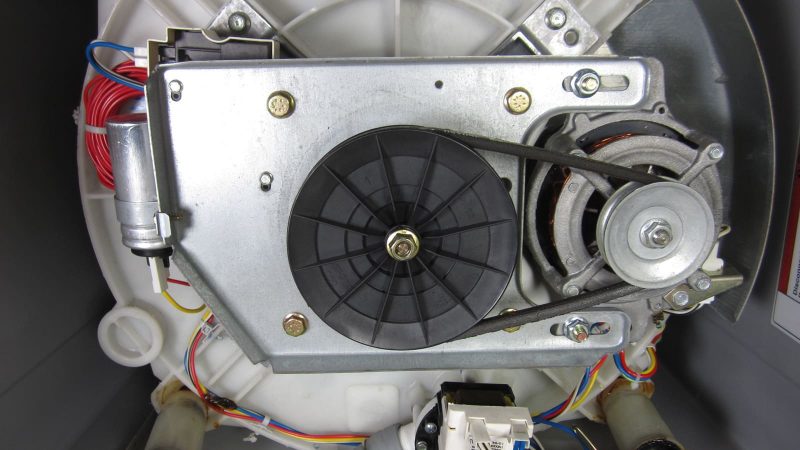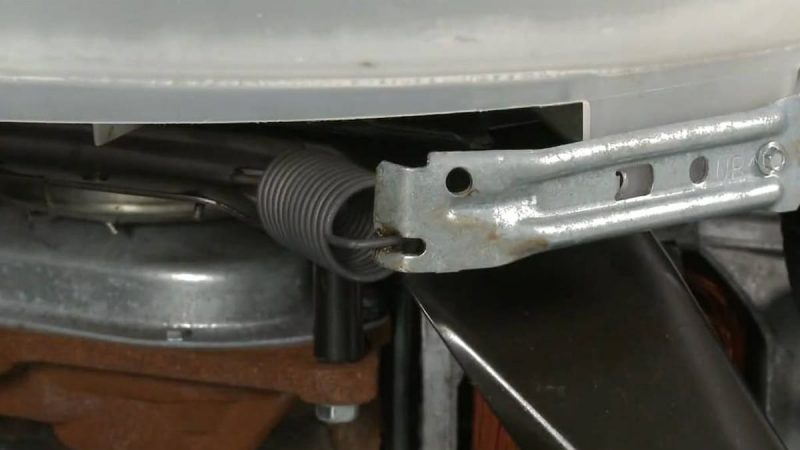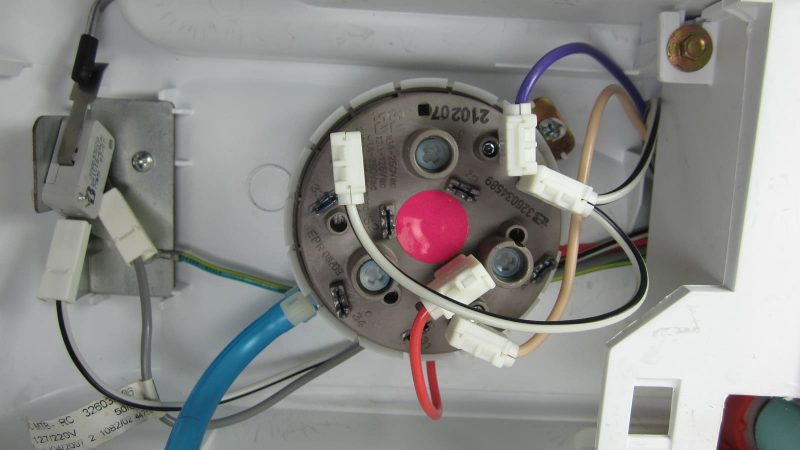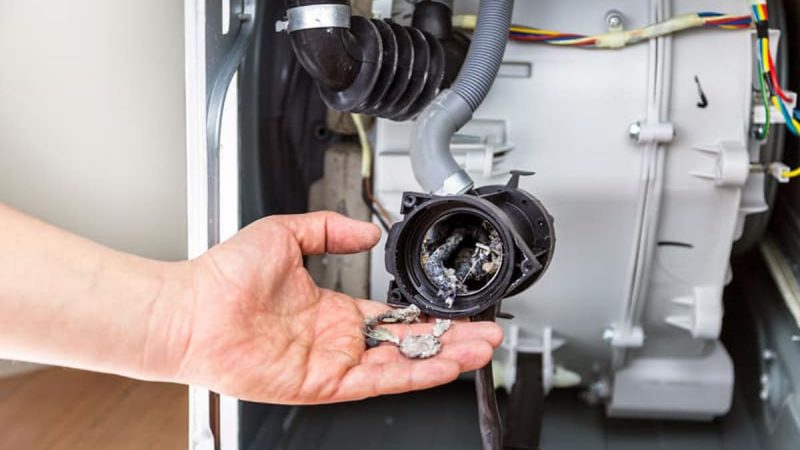Kenmore brand washing machines are quite popular among consumers. The great demand for equipment is explained by its reliability, but at the same time, some problems cannot be ruled out. But do not be upset, if there are breakdowns in this washing machine, you can fix them yourself. In order not to spend finances on repairs for nothing, we recommend that you familiarize yourself with the main problems and ways to solve them at home.
Washing machine stopped spinning
Lid switch test
The drum of a Kenmore washing machine may stop rotating if the switch on the lid is defective (top loading models only). This function of the technique is more of a safe use function in case someone from above wants to stick their hand into the drum at the time of washing. It is very easy to check the operation of the lid switch with a multimeter. If there is no such device in the house, just replace the switch.
Drive belt
The washing machine engine and transmission are connected by a drive belt. You should check the serviceability of the belt and its tension:
- if weakened, it is enough just to pull it;
- if it is torn, you will have to replace the part.
Engine coupling
The gearbox of the washing machine and the motor are connected by a coupling (only for top loading models). If the washing machine is overloaded with laundry, the clutch must fail to protect the transmission and motor. Also, this part simply fails over time. If a coupling defect is found, it can be replaced independently.
Motor control board
This part of the washing machine is responsible for powering the engine. If the board has become unusable, then the washing machine either fails completely or does not work correctly. You can fix the situation as follows:
- check the board for burnt components;
- check if the board is supplying power.
In the first case, it is enough to replace the burnt components, in the second, the entire board must be replaced.
Clutch in gearbox
The tank and gearbox of the washing machine are connected by a clutch. Thanks to this, the tank rotates at the desired speed, gradually gaining it. If the gearbox clutch is worn, the rotation of the tank will be unacceptable. In this case, the part should be replaced, it cannot be repaired.
Rotor and stator
These two parts of the washing machine work together to create an electromagnetic field. The strength of this field is such that it is able to rotate the tank in both directions. If the magnets in the rotor have become unusable, the washing machine will not rotate. Parts should be inspected to see if they need to be replaced. There are windings in the stator, sometimes they are damaged. After checking for possible defects, you can determine the need for repair or replacement.
Washing machine makes strange noises
Drum bearing
A bearing is installed in the center of the outer tub of the washing machine. Thanks to this detail, the inner tub rotates smoothly. It can be difficult to replace the bearing yourself, so it is recommended to replace both the bearing and the external bath at once.
The most common problem is the wear of the bearing seal, through which water can flow. Because of this, the bearings will rust and a loud sound will be emitted when the tank rotates.
Drive pulley
The drive pulley in a washing machine can bend, crack, or loosen over time, causing the appliance to make loud noises. To check the condition of the part, you can remove it yourself and inspect it. When a pulley is found to be defective, it is easy to replace it.
Drive belt
Drive belts can wear out over time and eventually break. If this happens, the washing machine will start to work very loudly. You can visually determine the break in the drive belt. In this case, you just need to replace it with a new one.
Clutch
A faulty clutch will not only cause the tub not to rotate, but also cause loud noises in the machine immediately after spinning. If the clutch has become unusable, the metal will begin to rub against each other. This part cannot be repaired and will have to be replaced.
Drain pump
If the washing machine makes an unpleasantly loud noise during the process of draining the water, the drain pump is to blame. This part may be defective or simply clogged. It is enough to inspect the pump and clean it if there are blockages. If the pipe is clean, but a loud sound is still present in the operation of the equipment, simply replace the pump with a new one.
Washing machine does not turn on
Drive unit
In the washing machine, the agitator and transmission are connected using a drive unit (only for top-loading models). If this part has worn out, the transmission shaft will continue to move, unlike the agitator. It is enough to inspect the drive unit and, if the wire unit is faulty or broken, it should be replaced with a new one.
Drive belt
The washing machine will not work if the drive belt has come off the pulley or is completely broken. For the correct operation of the equipment, it must be replaced.
Coupling in the engine
The transmission and the engine in the washing machine are connected using a clutch. When the machine is overloaded with laundry, the clutch fails so that the engine and transmission do not break. It is enough to inspect the clutch to determine the malfunction. If it is, the part should be replaced.
Washing machine stopped draining water
Hose and drain pump
The drain pump, like the hose, is often clogged with debris. Determining this is quite simple, inspect these parts for blockages. If the hose is clogged somewhere, simply remove the debris for the further correct operation of the machine. In the process of removing the drain hose, you should additionally inspect it for damage. If there is a problem, replace the part with a new one.
Coin filter
Some of the Kenmore washing machines come with a coin trap. This filter collects all fine debris before it enters the pump. In order for the water to drain properly, the pump must be empty. Cleaning the trap is very simple, it is easy to remove and simply rinse.
The washing machine vibrates and shakes a lot
Shock absorbers
Shaking and strong vibrations in the washing machine are prevented by shock absorbers. Over time, these parts become unusable. It is recommended to find shock absorbers in the washing machine and inspect them. The one that is visually defective is subject to replacement. If one shock absorber has become unusable, then it is better to replace them all in order to balance the wear.
Suspension rod
Hanging rods help eliminate any movement during the washing process. Over time, one or two rods may become unusable. If parts are found to be broken, they should be replaced with new ones.
Counterweight spring
The counterweight springs are located in the washer and can break. These parts additionally serve as shock absorbers or suspension rods. If the spring breaks in the counterweight, the tank becomes unbalanced, which means that during operation the washing machine begins to shake and vibrate strongly.
To correct the situation is enough:
- examine the spring and determine the presence of breakage;
- check the frame on which the spring is attached;
- replace the part if it is defective;
- If there is rust on the frame, it should also be replaced with a new one.
Leveling foot
The balance of the washing machine is supported by leveling feet. Each of them should be checked and aligned with their position. It is enough to adjust the height of the legs and fix in the desired position.
Washing machine slowly fills with water
Water outlet valve
The valve opens during the washing process, filling the tank with water. If the part is defective, water slowly seeps into the tank or does not enter it at all. For correct operation, the water pressure must be sufficient, it should also be checked. If everything is in order with the pressure, you should find the connection ports of the valve hoses and clean the mesh inside them. If this technique does not help, the valves must be replaced.
Low water pressure
Often in houses and apartments there is low water pressure. The valves require a pressure rating of at least 20 psi for proper operation.
Washing machine leaking
Drain pump
The drain pump may crack or become damaged, and it may also become loose. In this case, it begins to let water through, and it collects under the washing machine. It is impossible to repair the drain pump, this part needs to be replaced.
Tank bearing seal
Installed tank seals can break, causing water to seep out. This can cause liquid to enter the bearings. In such a situation, they will certainly fail. If seals are found to be leaking, it is recommended that they be replaced along with the bearings themselves.
Drain hose
The drain hose can crack, deform, and then leak. This usually occurs in the part between the back wall of the machine and the pump. If it is the hose that leaks, it must be replaced with a new one.
Inlet valves for water
This problem can be called the most common, due to which water begins to flow. The intake valves are easy to check by opening the top cover of the machine and looking for the parts on the back of the machine. If the valves start to leak, they must be replaced with new ones.

